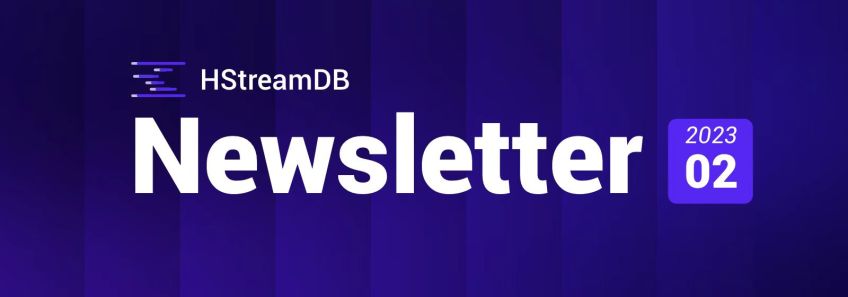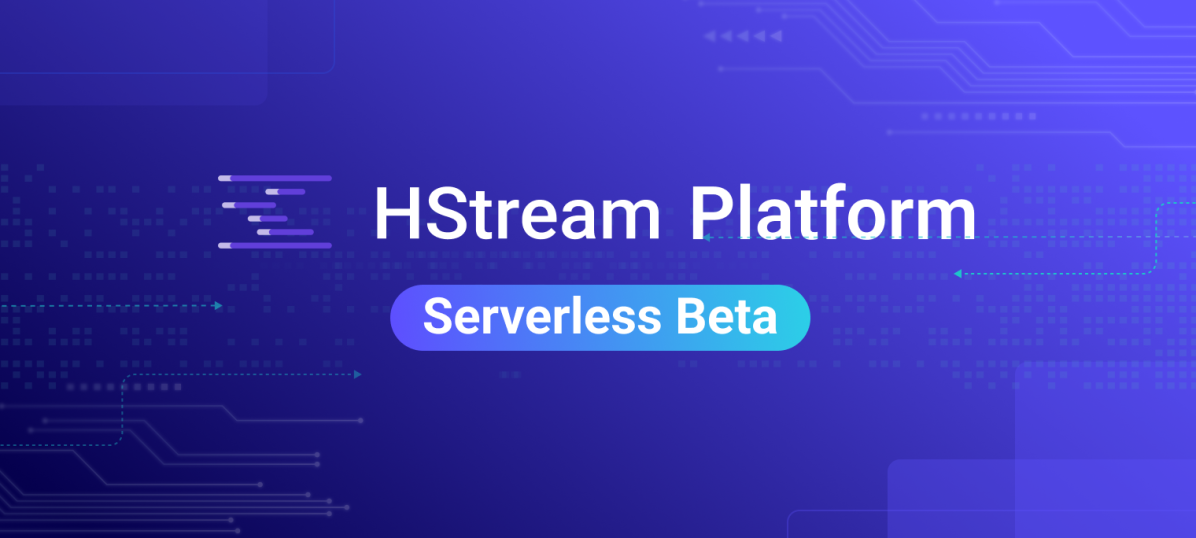
Mar 14, 2023
HStream Console, HStreamDB 0.14 is Released
Over the past two months, we have released versions 0.13 and 0.14 of HStreamDB, which include several bug fixes.

Dec 9, 2022
HStreamDB 0.11 is released | Newsletter 202211
We released HStreamDB 0.11 in November with a few issue fixes. The development of the HStream Platform continues, and we're planning to release an Alpha version at the end of December.

Oct 20, 2022
New Client and Cluster Deployment Tools, Apply for HStream Cloud Trial Right Now
This month, we added support for choosing Rqlite as the storage component for the metadata of HServer and restructured HServer based on the new self-developed Haskell gRPC framework.

Sep 28, 2022
End-to-end compression to boost read and write performance | Newsletter 202208
This month the last image has already introduced features such as end-to-end compression, CLI support for TLS, and fixes to several known issues.

Sep 28, 2022
Optimized Sharding Model and Further Improvement on Data Integration Framework | Newsletter 202207
This month, the HStreamDB team has been finishing up the development and release of v0.9.

Aug 24, 2022
New clustering mechanism, Visualized monitoring, Python client release… | Newsletter 202206
In June, the HStreamDB team focused on developing the upcoming v0.9, including switching HServer to a decentralized cluster model, an HStream IO Embedded Runtime and CDC Source Connector.

Jun 13, 2022
HStreamDB Newsletter 2022-05|Decentralized Clustering Mechanism, New Clients and Deployment Methods
This May, the HStreamDB team has officially released v0.8 and started the development of v0.9, which will bring significant improvements in clustering, external system integration, partitioning, and more.

May 17, 2022
HStreamDB Newsletter 2022-04 | Core Features Optimized, More Metrics for Monitoring
This April, the HStreamDB team completed multiple features, optimizations and fixes of problems for the HStream Server.

May 13, 2022
HStreamDB v0.8: More convenient for cluster deployment and monitor
In v0.8, we offer better read/write performance, improved long-running stability and reliability, new security support based on mTLS, new metrics, an admin server, benchmark tools, and Terraform deployment support.
 HStream Platform Serverless Beta Launched: A Comprehensive and Integrated Streaming Data Solution
HStream Platform Serverless Beta Launched: A Comprehensive and Integrated Streaming Data Solution








